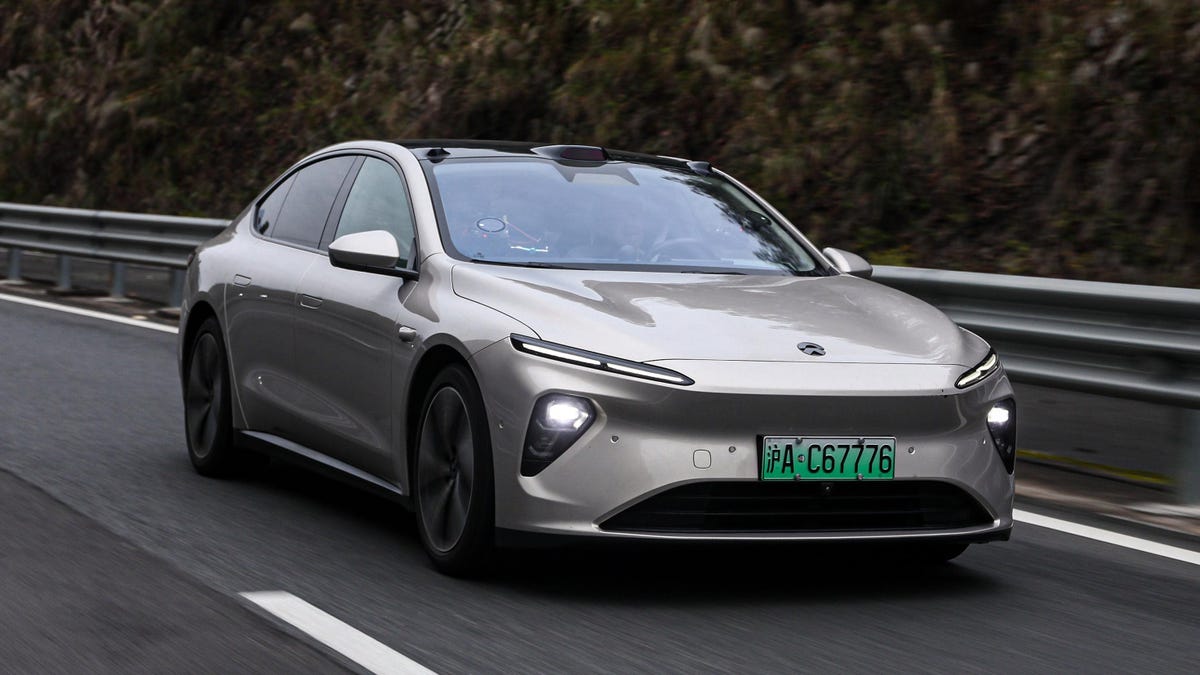The Nio ET7 is already one of the highest-range electric vehicles available globally, with its 100-kWh battery pack option giving the large Chinese sedan a range of 435 miles on the European NEDC cycle (which is more optimistic than the EPA cycle). Now the ET7 is offered with a huge 150-kWh semi-solid-state battery pack, and Nio’s founder, chairman and CEO William Li took one on a journey across China, going 649 miles without needing to charge.
Li began the trip in Shanghai, driving to Xiamen over the course of 14 hours (including a couple stops along the way), and he was joined in the car by Dr. Fei Shen, Nio Power’s senior vice president, and Chenxia Huang, a general manager at Tencent News, who livestreamed the journey. When the car reached its destination it still had three percent charge left, after starting at 100 percent. Li hopes this gas-beating long range “will further promote the transformation of the automotive industry from the consumption of gasoline to electricity.”
There are a couple of important points to note. The test was done in fairly cold temperatures between 28 and 54 degrees Fahrenheit, which negatively affects EV range, and 92 percent of the driving was done with the car’s advanced Level 2 automated driving system active, which limits the car to a top speed of 56 mph. The ET7 is one of the most aerodynamic production cars of all time, matching the Tesla Model S and being bested by the Mercedes EQS, Lucid Air and Volkswagen XL1. In more ideal conditions even more range could be squeezed out of the ET7 — Li even disclosed that a test car with the new battery did 711 miles on a single charge.
Nio says this new 150-kWh battery pack has the highest energy density of any production battery, and it’s compatible with its entire range of electric vehicles — a lineup that now includes five SUVs, two sedans and a wagon. Existing Nio owners will be able to upgrade their car’s existing battery using the brand’s Power Swap stations, of which there are 2,289 in China and 33 in Europe. Pricing hasn’t been announced, but Nio says there will be “flexible options’ for the battery upgrades. The other current battery options are 70 kWh and 100 kWh.
These battery swap stations are another way that Nio combats range anxiety. Instead of having to plug in and charge for a longer amount of time, you can just drive up to the station, swap out your depleted battery for a fully charged one in less than five minutes, and keep going. Nio recently stopped offering free battery swaps, which is a shame, but the company says it has completed more than 34 million battery swaps.
While the Nio brand is already selling cars in Europe, its American future is more uncertain. Last year Li said Nio’s next-gen EVs will be sold in the U.S., but we don’t yet know when that would be. Nio is also working on one or two sub-brands for lower-cost EVs.

